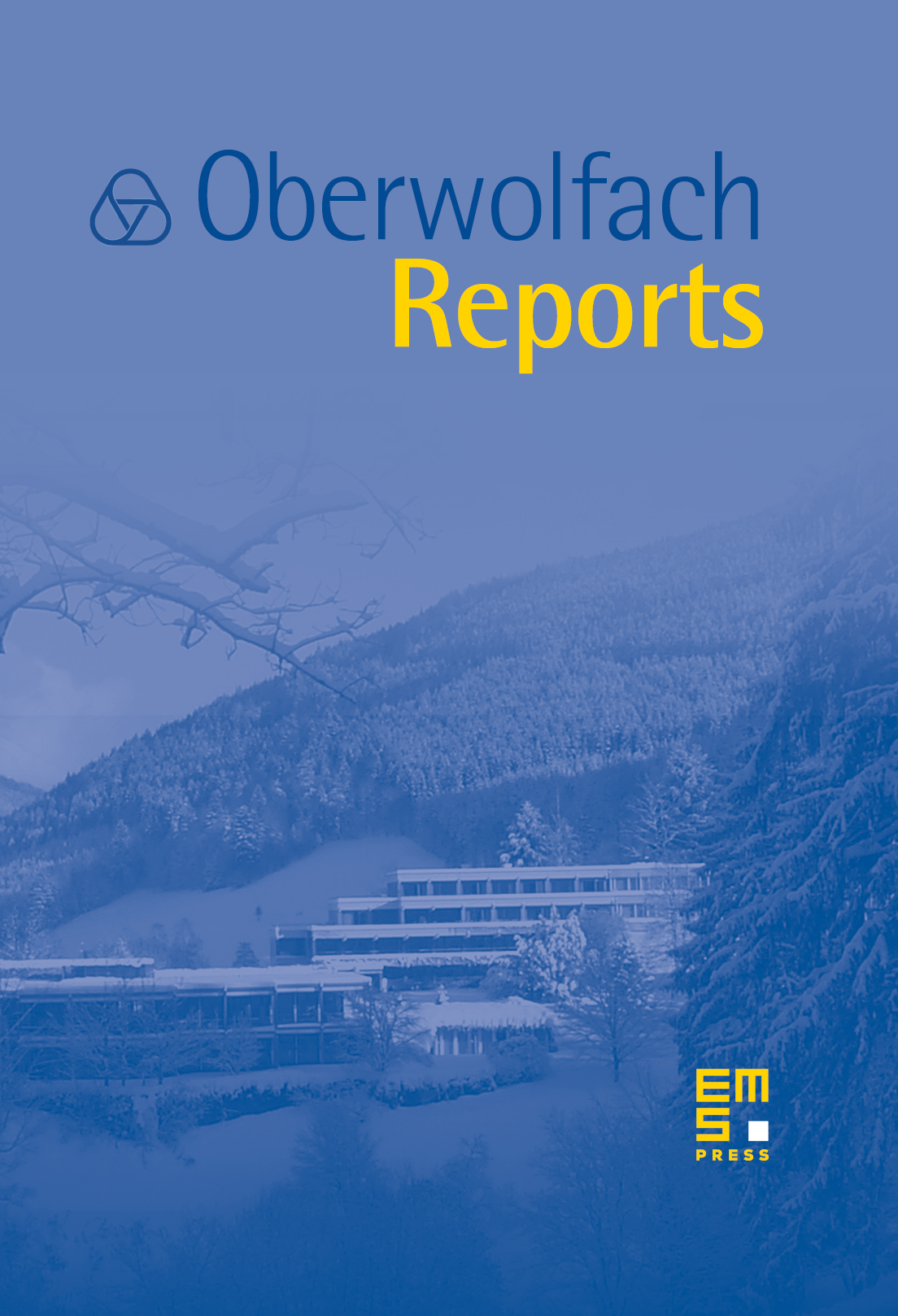New Perspectives in Stochastic Geometry
Wilfried S. Kendall
Warwick University, Coventry, UKGünter Last
Universität Karlsruhe, GermanyIlya S. Molchanov
Universität Bern, Switzerland

Abstract
The principal aim of stochastic geometry is the mathematical analysis of random geometric structures. Fundamental examples of such structures are point processes of geometric objects, random tessellations of space into convex or non-convex regions, random systems of non-overlapping balls (or more general convex bodies), or excursion and level sets of Gaussian random fields. The workshop was devoted to the discussion and exploration of recent advances in stochastic geometry and its related areas. Among the 23 participants were many leading figures in the field as well as some very promising young scientists.
One main theme of the workshop concerned new results and methodology in classical stochastic geometry. In recent years it has become possible not only to make conclusions about mean values of geometric quantities, but also to derive distributional properties, to prove limit theorems and large deviation results, and to explore higher-order moment properties. Examples include: Hug, Reitzner (approximation of polytopes), Calka (visibility properties of the Boolean model), Schreiber (polygonal Markov fields), Penrose (normal approximation in random geometric graphs), Yukich (limit theorems), Reitzner (random tessellations), Baccelli (point processes and information theory).
A second main theme of the workshop concerned allocation and matching procedures for point processes and random measures.The study of such allocations has resulted in some remarkable progress in the understanding of invariance properties of Palm probability measures and associated transport and coupling questions.There are deep and striking relationships with random tessellations, classical optimal transport theory, potential theory, and complex analysis. Examples include: Peres (fair allocations, optimal matchings, gravitational allocation, ...), Sturm (optimal transportation of measures on metric spaces), Thorisson (transport kernels and mass-stationarity), Last (Cox and Bernoulli transports).
Three series of lectures formed the organizational backbone of the workshop. They were delivered by Matthias Reitzner on "Recent results in stochastic geometry", by Yuval Peres on "Fair allocations" and by Theo Sturm on "New trends in optimal transportation on Riemannian and singular spaces". Many of the contributed talks were related to one or more issues covered by these lectures. Another integral part of the programme was provided by three discussion sessions "Probability models with geometric flavour" organized by Jesper Møller and Sergei Zouev, "Asymptotics in stochastic geometry" organized by Peter Mörters and Mathew Penrose, and "From convex to metric and fractal geometry" organized by Martina Zähle and Wolfgang Weil. These sessions provided space for participants to bring up new ideas and discuss open problems in an informal manner.
Many participants of the workshop co-authored a collection of papers "New Perspectives in Stochastic Geometry" edited by W.S. Kendall and I. Molchanov that will be published by the Oxford University Press in 2009.
Cite this article
Wilfried S. Kendall, Günter Last, Ilya S. Molchanov, New Perspectives in Stochastic Geometry. Oberwolfach Rep. 5 (2008), no. 4, pp. 2655–2702
DOI 10.4171/OWR/2008/47